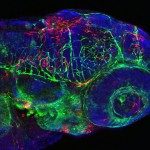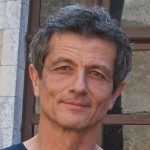Link to Pubmed [PMID] – 20154732
Nature 2010 Mar;464(7285):112-5
The ontogeny of haematopoietic stem cells (HSCs) during embryonic development is still highly debated, especially their possible lineage relationship to vascular endothelial cells. The first anatomical site from which cells with long-term HSC potential have been isolated is the aorta-gonad-mesonephros (AGM), more specifically the vicinity of the dorsal aortic floor. But although some authors have presented evidence that HSCs may arise directly from the aortic floor into the dorsal aortic lumen, others support the notion that HSCs first emerge within the underlying mesenchyme. Here we show by non-invasive, high-resolution imaging of live zebrafish embryos, that HSCs emerge directly from the aortic floor, through a stereotyped process that does not involve cell division but a strong bending then egress of single endothelial cells from the aortic ventral wall into the sub-aortic space, and their concomitant transformation into haematopoietic cells. The process is polarized not only in the dorso-ventral but also in the rostro-caudal versus medio-lateral direction, and depends on Runx1 expression: in Runx1-deficient embryos, the exit events are initially similar, but much rarer, and abort into violent death of the exiting cell. These results demonstrate that the aortic floor is haemogenic and that HSCs emerge from it into the sub-aortic space, not by asymmetric cell division but through a new type of cell behaviour, which we call an endothelial haematopoietic transition.

